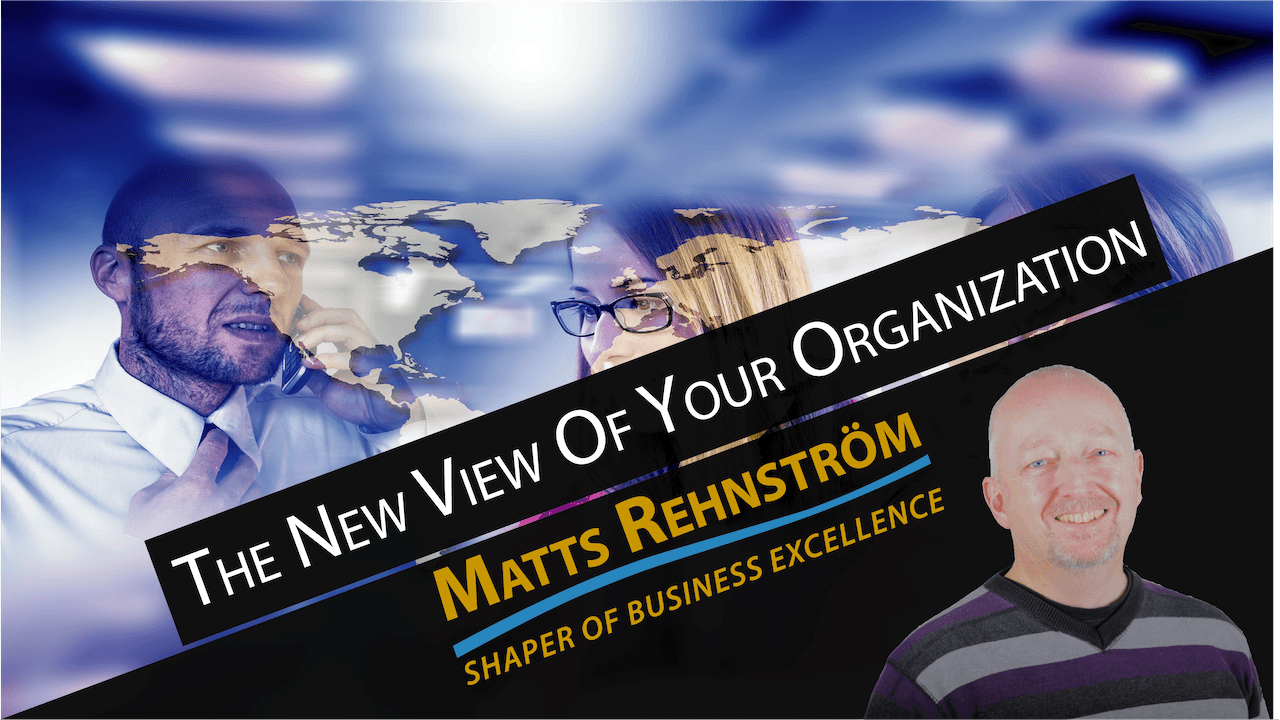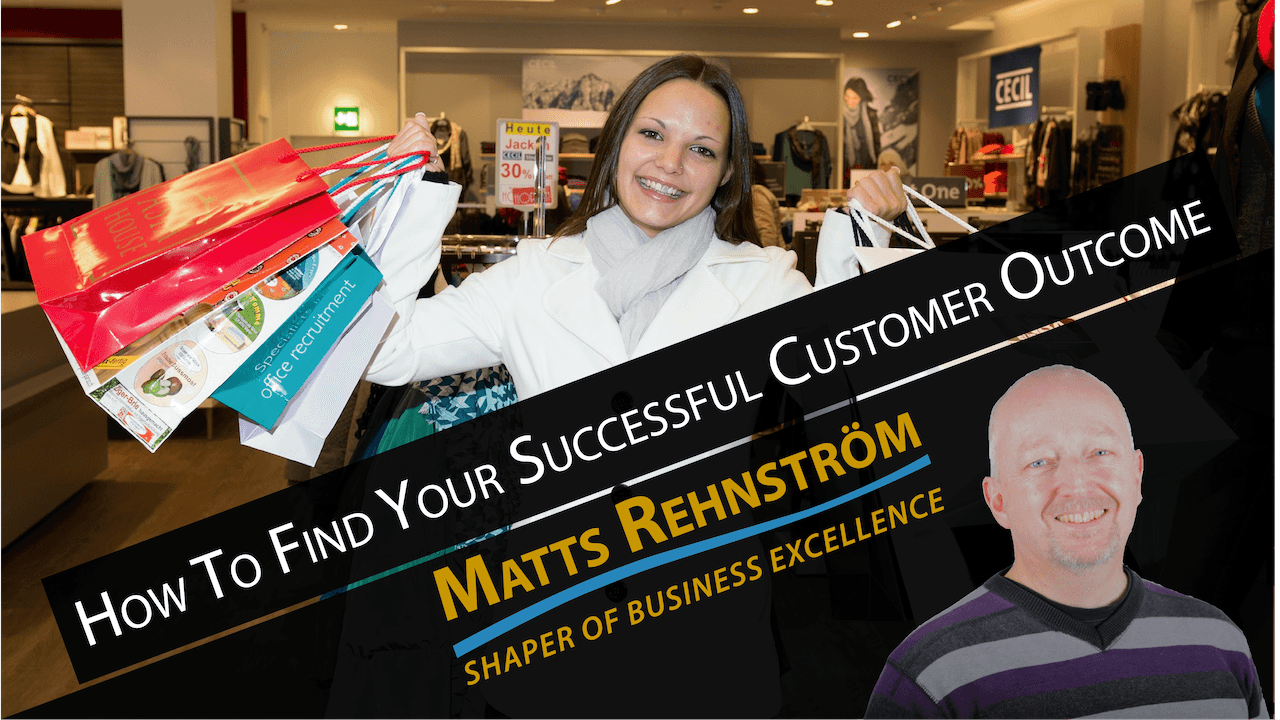In this video, I’m going to talk about the organizational model and how you can look at your business in a totally new way. Hi there. Matts Rehnstrom here, Shaper of Business Excellence. And once again, welcome back to the series where I talk about these very important business excellence components and the relationship between them.
I Want to Help You Succeed
And the reason why I’m doing this is that I would like to help you. I love to help you to understand them in depth and then to be able to take the next step and excel in each and every one of them because if you do, you will have reached very, very far within your business of how to make it more excellent and growing it and improving it. That’s what I’m doing there.
And with several videos we’ve been talking about the higher level components like business idea and strategy and so on, and we have also gone down to the product portfolio and the market identification and talking about the successful customer outcome and all these things will come back later as well. As I said, they’re all related to each other. It’s like a big mesh here with all of these components related to each other.
Your People Are Your Organization’s Key Resource
In one video, I think it’s three or four videos back, I talked about the business model and one of these components within the component is the key resources. And one of the most key resources that we usually have in our business, that’s the resource of humans. The human resources. Because most of our businesses contain people and those people are very important for us and the more service we have in our organization, the more people we will also have and the more vital it is that we have good resources taking care of our clients.
Organizations Have 3 Main Parts
So let’s look into the resource and we do that by zooming over or moving over to the organizational model and in the organizational model we have then, we have three parts. And the first part is the project organization, and the project organization has existed for around closely 200 years, and what was that?
The Project Organization to Allocate Resources to Projects
In the beginning, we only had the line organization, the functional organization, and that’s the hierarchy. The standard hierarchy where you have a manager and the manager has managers and so on, but then people or in businesses, people understood then that we can’t solve everything within the hierarchy, within the line organization.
So we need another means to do it, and that is the project because then you set an organization beside the line organization and you say, “Okay. We want you to solve this task and we want you to have this much money to do it and you can have then this resource and this resource and so on.”
So then we were taking resources from wherever in the organization or several organizations and we put them into a project. So the project organizations, there we run our projects.
The Process Organization Allocates Resources to Deliver Value
And the next part is then the process organization because in the process organization we run our processes. And processes as you know, haven’t been around for that long. Around the ’80s or ‘90s.
Yeah. I know that Deming started this in 1928 and he started to think about that actually would have processes instead of the line organization, but generally, we started to talk about processes during the ’90s when we talked about business process re-engineering. Where we went in and looked at the processes and we remodeled them.
So the process organization, it’s also a way that is not within the line organization. And that is that we have a view of that we deliver value constantly, all the time. A process always continues and we deliver a value, a new client comes in.
And we deliver a value, a new client comes in and so on and so on. So we started to then design our processes in a way that was much better than we have done before. But as you know, as I know, there’s still friction between processes and the line organization and we have the Matrix Organization for example, that try to solve this. And I see many organizations don’t really succeed at all. Some do, most of them don’t.
The Competence Organization Allocates Talent Resources to Deliver Value
But then we have the third part in this model, and that’s the competence organization. Which is a way to look at your resources in a totally new way. Instead of having people in boxes in a hierarchy that this is my department or unit and this is your department or unit, and I have my resources and you have your resources, and I’m the manager or you’re the manager and we both have another manager that is above us. And that hierarchy, we can start to think about what competence is more needed to deliver the value for our clients or our customers.
The Competence Organization Allocates Resources Effectively and Efficiently
So that is a much more flexible way of handling our resources and much more nice to be in that kind of organization as well. It’s a little fuzzy for some people because they’re so used to having the line organization’s structure, with one boss that has a boss that has a boss and so on.
So if you go into the competence organization, it could be a little bit troublesome in the beginning, but it’s much more powerful in the end. But the thing here that this model shows is that the key is in the middle because the processes and the projects, those demand competence in order to run the project, in order to run a process you need resources.
The Right Human Resources at the Right Time
And in the business model, we talked about the key resources. And those resources when it comes now to human resources, you need those resources on the right place, at the right time with the right competence to do whatever the project and the process is demanding to be done and all focusing on delivering a fabulous value for our clients, our customers.
So the processes and the projects demand a competence, skills from the competence organization, that answers that call and says, “Yes, I have this resource and this resource and this resource.”
So individuals actually exist in the competence organization. That’s where their home is. That’s where their boss is, their manager, their resource owner, their competence owner, they can have different role names. But that’s where the person I talk salary with, where I talk if I’m feeling not well and all those soft things that we have within our relationship at work. Those I talk mostly in the competence organization, but I talk more about what to do and how to do it, more detailed about what to deliver. That I talk about in the processes and the projects.
How do You Assess The Competencies in Your Organization?
I can go very deep into this, but I will stop here for now. And if you’d like to ask me anything, as I said before, just shoot me an email, call me and I will respond back as soon as possible or leave a comment. Why not do that? Leave a comment down here and I can answer that as well.
Okay, so in the next video I will then take this competence organization and I will specify that more in detail when we come into what competencies we need in the organization. How can we think about what competencies needed and what competencies do we have?
That’s what I will talk about in the upcoming video. But until then, if you’d like to have this poster you can have it for free. Just click here and you can go to a page where you can download it. And as I said, it’s for free so you can follow along, better in the videos, and you can understand better all these components and the relationship between them. With that said then, see you in the next video. And let’s go shape our business for excellence.


